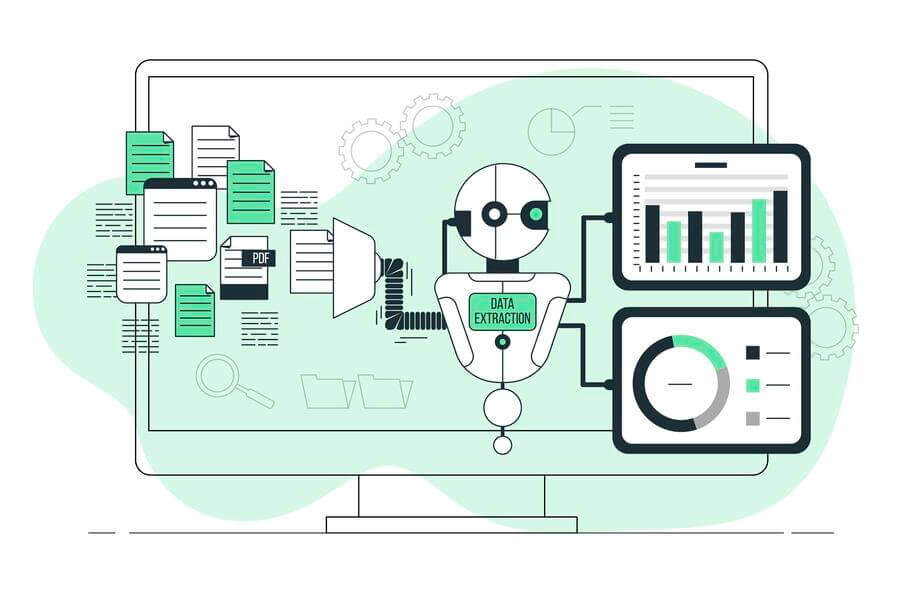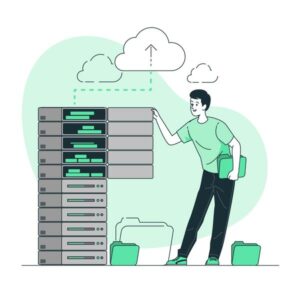Artificial Intelligence (AI)
AI is the ability of a computer or computer-controlled robot to execute intelligent activities.
To put it another way, artificial intelligence (AI) refers to the development of software that simulates human actions and capabilities.
Significant tasks:
Machine learning: This is how we “train” a computer model to predict and draw inferences from data.
Error detection: Automatic error detection in a system ( service gives developers an API).
Computer vision: Software that can understand the following items
- Image classification: images based on their contents
- Object detection: classify individual objects within an image
- Semantic segmentation: Elements(pixels) in the image are labeled with their respective object labels.
- Image analysis: Extract or collect information from images (tag, catalog )
- Face detection, analysis, and recognition: locates human faces in an image or video.
- Optical character recognition (OCR): Detect and read the text in images
Natural language processing: word recognition software that allows a computer to understand and respond to human speech or writing.
- Language: Reading and analyzing text, training language models to recognize spoken or text-based commands.
- Translator: Translate text between more than 60 languages.
- Speech: Detect and recreate speech, as well as translate across spoken languages
- Azure Bot: service enables conversational AI, where a software “agent” may carry on a conversation with a human user. By utilizing back-end services like Language and connecting to channels for online chat, email, Microsoft Teams, and others,
Knowledge mining / Extraction: Knowledge extraction is the process of gaining useful information from enormous amounts of data, which are usually unstructured.
Machine Learning (ML)
Machine Learning is the foundation for most AI solutions.
The goal of machine learning is to build a model with the help of mathematics and statistics that can accurately predict future values.
Massive amounts of data are produced by our daily activities in the modern world. We create vast amounts of data every day, from the messages we send to our friends and family to the photos and movies we snap with our phones. Millions of sensors in our buildings, vehicles, cities, and transportation networks generate much more data. All of the information can be used by data scientists for training machine learning models to draw conclusions and make predictions from the data.
Azure Machine Learning is a service offered by Microsoft Azure that serves as a platform for developing, administering, and sharing machine learning models in the cloud.
Machine learning can be done in two broad ways: supervised and unsupervised. Similar techniques are used in both cases to teach a model to predict.
- A dataset with label values is required to begin a supervised machine-learning approach.
- Regression: utilized in forecasting a numerical number, such as a price, a sales tally, or any other type of continuous metric.
- Classification: intended for use in deciding between two alternatives, such as whether or not
- The unsupervised machine learning method begins with an unlabeled dataset. Clustering is a good example of an unsupervised machine learning job.
- Clustering: labeling technique that uses clustering to determine labels by grouping information into clusters
features and capabilities: Automated machine learning, Azure Machine Learning designer, Data and compute management, Pipelines
Azure Machine Learning studio
With Azure Machine Learning Studio, Microsoft provides a centralized platform for Machine Learning Computation on the cloud. Azure Machine Learning helps data scientists enhance their efficiency by automating many of the time-consuming procedures associated with training models.
The major component of your machine learning environment is the workspace, where you will keep and manage all of your machine learning-related data, computing resources, code, models, and other objects.
Azure Machine Learning compute
Since Azure Machine Learning is primarily a service for training and administering machine learning models, it requires access to computing resources in order to carry out the training process.
Cloud-based compute targets execute model training and data exploration.
- Compute Instances: Data scientist workstations for developing data and models.
- Compute Clusters: Virtual machine clusters
- Inference Clusters: The areas where you want to deploy your trained models for predictive services.
- Attached Compute: Links to Azure compute resources like VMs or Databricks clusters.
Azure Automated Machine Learning
Machine learning automation is included in Azure Machine Learning and allows for the exploration of various pre-processing strategies and model-training algorithms. By using the processing power of the cloud, these features can quickly determine which supervised machine learning model will yield the most accurate results for your data.
In Azure Machine Learning, you run jobs. You can establish multiple job parameters before automating machine learning. The run configuration specifies your training script, computing target, and Azure ML environment for a training job.




